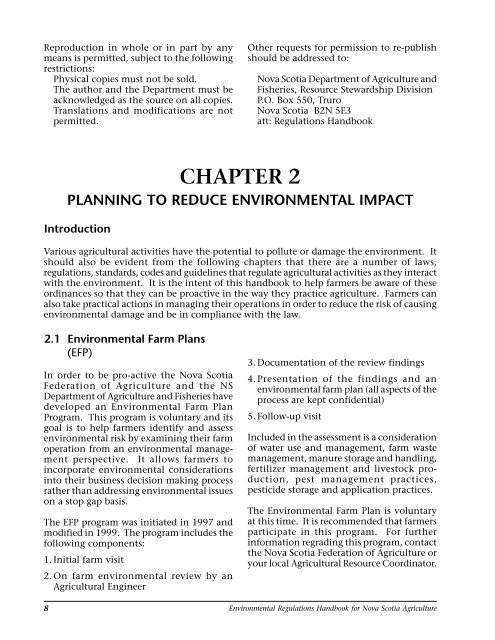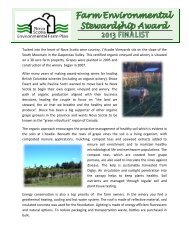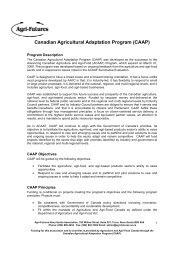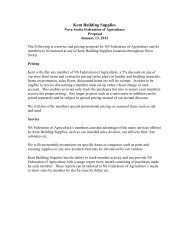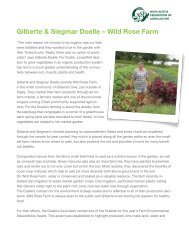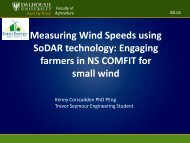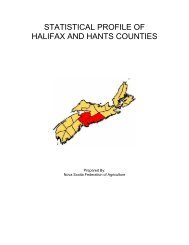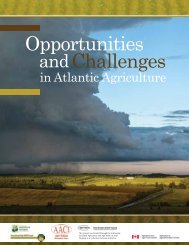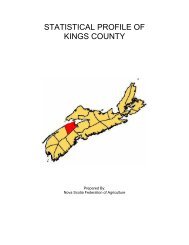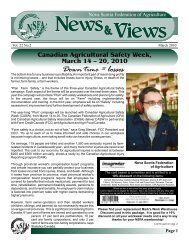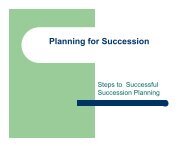Environmental Regulations Handbook for Nova Scotia Agriculture
Environmental Regulations Handbook for Nova Scotia Agriculture
Environmental Regulations Handbook for Nova Scotia Agriculture
You also want an ePaper? Increase the reach of your titles
YUMPU automatically turns print PDFs into web optimized ePapers that Google loves.
Reproduction in whole or in part by any<br />
means is permitted, subject to the following<br />
restrictions:<br />
Physical copies must not be sold.<br />
The author and the Department must be<br />
acknowledged as the source on all copies.<br />
Translations and modifications are not<br />
permitted.<br />
Other requests <strong>for</strong> permission to re-publish<br />
should be addressed to:<br />
<strong>Nova</strong> <strong>Scotia</strong> Department of <strong>Agriculture</strong> and<br />
Fisheries, Resource Stewardship Division<br />
P.O. Box 550, Truro<br />
<strong>Nova</strong> <strong>Scotia</strong> B2N 5E3<br />
att: <strong>Regulations</strong> <strong>Handbook</strong><br />
CHAPTER 2<br />
PLANNING TO REDUCE ENVIRONMENTAL IMPACT<br />
Introduction<br />
Various agricultural activities have the potential to pollute or damage the environment. It<br />
should also be evident from the following chapters that there are a number of laws,<br />
regulations, standards, codes and guidelines that regulate agricultural activities as they interact<br />
with the environment. It is the intent of this handbook to help farmers be aware of these<br />
ordinances so that they can be proactive in the way they practice agriculture. Farmers can<br />
also take practical actions in managing their operations in order to reduce the risk of causing<br />
environmental damage and be in compliance with the law.<br />
2.1 <strong>Environmental</strong> Farm Plans<br />
(EFP)<br />
In order to be pro-active the <strong>Nova</strong> <strong>Scotia</strong><br />
Federation of <strong>Agriculture</strong> and the NS<br />
Department of <strong>Agriculture</strong> and Fisheries have<br />
developed an <strong>Environmental</strong> Farm Plan<br />
Program. This program is voluntary and its<br />
goal is to help farmers identify and assess<br />
environmental risk by examining their farm<br />
operation from an environmental management<br />
perspective. It allows farmers to<br />
incorporate environmental considerations<br />
into their business decision making process<br />
rather than addressing environmental issues<br />
on a stop gap basis.<br />
The EFP program was initiated in 1997 and<br />
modified in 1999. The program includes the<br />
following components:<br />
1. Initial farm visit<br />
2. On farm environmental review by an<br />
Agricultural Engineer<br />
3. Documentation of the review findings<br />
4.Presentation of the findings and an<br />
environmental farm plan (all aspects of the<br />
process are kept confidential)<br />
5. Follow-up visit<br />
Included in the assessment is a consideration<br />
of water use and management, farm waste<br />
management, manure storage and handling,<br />
fertilizer management and livestock production,<br />
pest management practices,<br />
pesticide storage and application practices.<br />
The <strong>Environmental</strong> Farm Plan is voluntary<br />
at this time. It is recommended that farmers<br />
participate in this program. For further<br />
in<strong>for</strong>mation regrading this program, contact<br />
the <strong>Nova</strong> <strong>Scotia</strong> Federation of <strong>Agriculture</strong> or<br />
your local Agricultural Resource Coordinator.<br />
8 <strong>Environmental</strong> <strong>Regulations</strong> <strong>Handbook</strong> <strong>for</strong> <strong>Nova</strong> <strong>Scotia</strong> <strong>Agriculture</strong>


